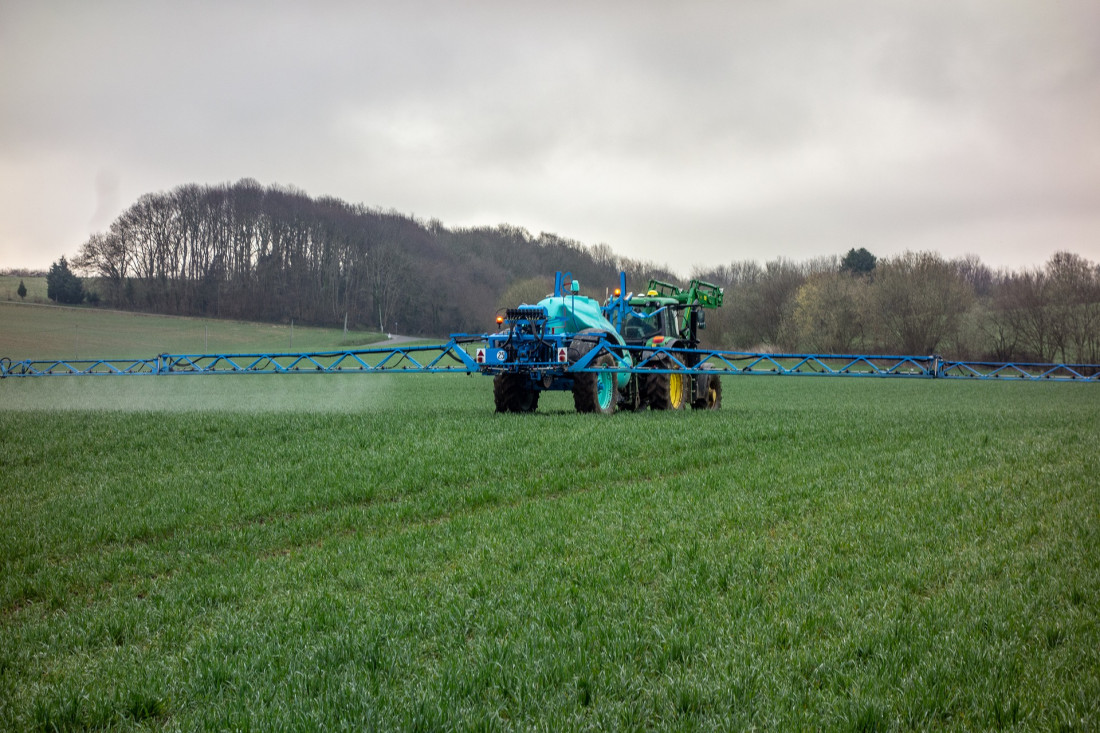A recent study by fertilizer experts from the University of Western Australia has shown that there is a direct link between crop residue and nitrogen availability in crops. While the study analysed only nitrogen application and uptake in wheat, it is likely that a similar effect takes place across all crop types.
The research paves the way for farmers and fertilizer manufacturers to develop techniques and application methods that could prevent nitrogen fertilizers from coming into contact with plant residues. This would increase efficiency, limit waste and by reducing run off, be better for the environment.
The research was conducted by Nathan Craig, in a study supported by the Grains Research and Development Corporation (GRDC), a government funded research foundation that aims for, “improvements in production, sustainability and profitability across the Australian grains industry.”
Reporting on the breakthrough, the industry journal Agronomist and Arable Farmer stated that, “The aim of the study was to quantify the supply of nitrogen to wheat crops from the soil and crop residue and determine the effect on grain yield and grain nitrogen uptake – in a monoculture wheat rotation and a chickpea-canola-wheat rotation.” Adding that, “Research was conducted at the Western Australia No-Tillage Farmers Association (WANTFA) long-term no-tillage trial site at Cunderdin in WA’s central grainbelt.”
Craig’s study showed the clear benefits of applying nitrogen fertilizer, when it concluded that, “Across the three seasons tested, there was an overall benefit of applying nitrogen fertilizer to monoculture wheat, which increased grain yield and grain nitrogen uptake in most years, and effectively closed the yield gap between wheat grown in monoculture and wheat grown in rotation with legume crops and with no nitrogen fertilizer added.” However, Mr Craig also added that, “The application of nitrogen fertilizer actually reduced the mineralisation of nitrogen in the soil in the monoculture wheat system, whereas in the rotated wheat system there was less effect.”
But most interesting in the study, was the impact that the left over plants and pieces of crop from previous seasons had on nitrogen levels in the soil. Something that Craig outlined when he said, “While retaining crop residue is known to improve nutrient recycling in no-tillage systems in the longer term, the potential for nitrogen to be immobilised in the short term during decomposition by microbial activity could provide significant competition for plant available nitrogen in the soil during the growing season.”
Craig also added that, “More importantly, when soil mineral nitrogen levels were low at seeding, and the crop residue carbon-to-nitrogen ratio was high, there was a high risk of immobilisation of nitrogen in both of the wheat systems.”
If the research results hold true, then there is a clear opportunity for farmers to reduce nitrogen fertilizer needs by adapting new crop management techniques, or by applying the fertilizer in a different, more effective way, so that it avoids contact with crop residue, or avoids the soil surface where mineralisation of nitrogen is concentrated.
One such technique that Craig himself suggested was, “An annual sampling program could be conducted at the start of each growing season to determine the carbon-to-nitrogen ratio of the crop residue mix left on the soil surface, and the amount of nitrogen in the soil to a depth of 10cm. From this, you could estimate the potential for immobilisation of nitrogen following fertilizer application.” This could, Craig claims, “be achieved using existing technology where additional nitrogen fertilizer is applied at seeding and ‘banded’ below the seed at a depth greater than 5cm, rather than an in-crop broadcast application during the season.”
Craig believes that this would increase the efficiency of uptake of nitrogen in crops, meaning that less fertilizer would be needed.
While there has already been a great deal of study in the fertilizer industry to find more efficient ways to apply agriproducts, this discovery will further increase pressure on nitrogen fertilizer suppliers and manufacturers to find a more effective way to get nitrogen products to crops. The three year analysis of mineralization and nitrogen uptake in wheat gives a key insight into exactly where and how so much nitrogen fertilizer is being wasted.
By analysing exactly where in the soil nitrogen is most available for crops, then perhaps the industry will also be able to develop a more effective method of applying such a vital product. However, if this research is accepted fully by the fertilizer industry, then one question remains: should fertilizer manufacturers develop an improved application method to help crops absorb more nitrogen, or is it purely the farmer’s role to consider the effect of crop residue on nitrogen fertilizers?

